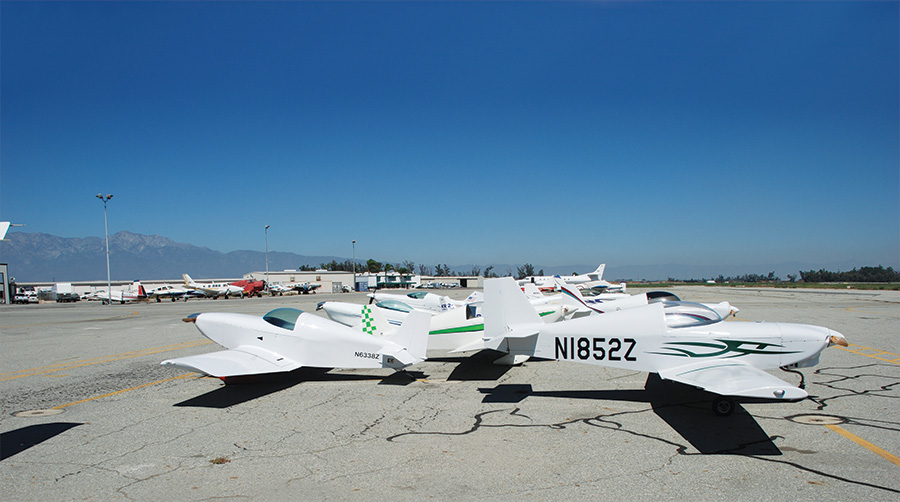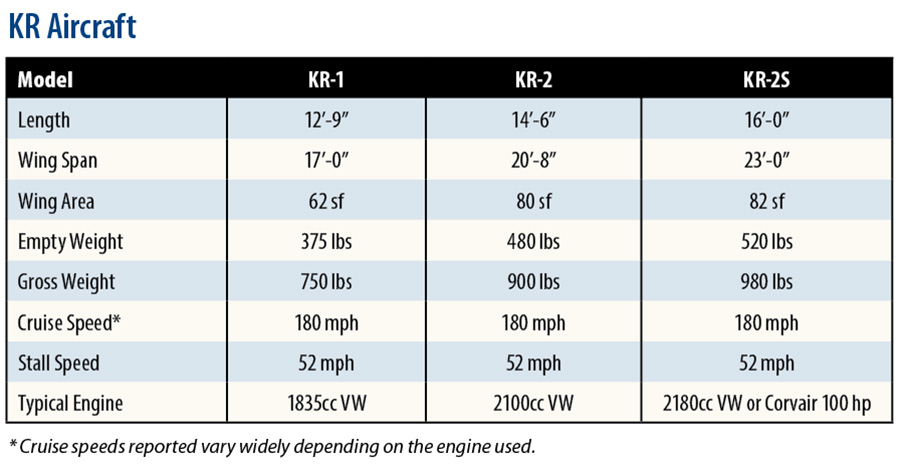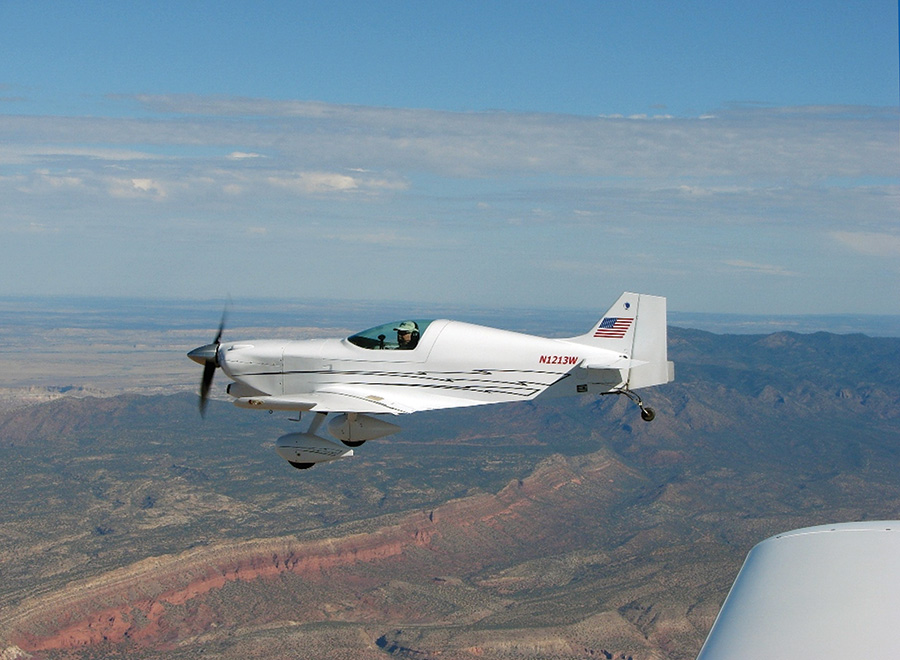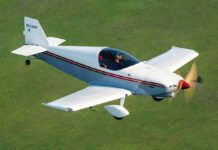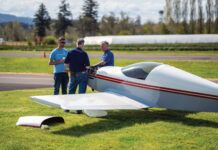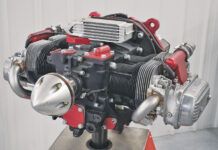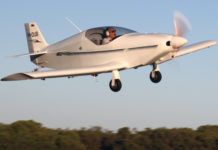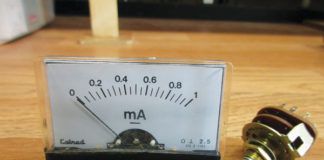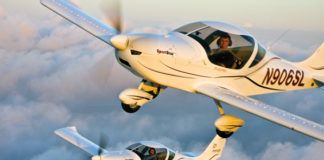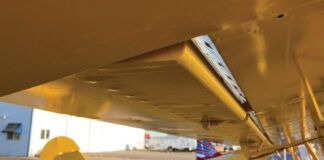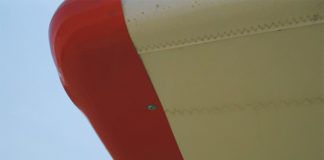How often is heard the lament, “There are no affordable kit airplanes anymore, and the ones that come close don’t even look like real airplanes.” Many hundreds of KR builders know better. Some 40 or so gathered recently at Chino, California, to show off their planes, compare notes, attend a few seminars, and visit a pair of great museums in their spare time. The proof that these little planes can cover some real ground is that they came from far and wide—New Mexico, Pennsylvania, England (yes, all the way across the Atlantic), and more.
The People
The owner of nVAero, the distributor of the KR plans and manufacturer of the kits and parts is Steve Glover. The plans are actually still owned by Jeanette Rand, the widow of the original designer, which can present challenges from time to time, but Glover has come to terms with the arrangement. He runs nVAero out of his hangar at Chino Airport (KCNO) in Southern California, where he makes parts, options, and complete kits for a loyal cadre of builders around the country and around the world. At their recent fly-in, a crate holding a new kit was addressed to a builder in Belgium. KR builders are also located in Brazil, Canada, South Africa, United Arab Emirates, and various other points around the world.

Colin Hales and his KR-2, G-BYLP, always drew a crowd anxious to hear about his ’round the world tour.
Marc Baca, a relatively new KR builder from nearby Los Angeles, did much of the work of organizing the fly-in. He was able to gather KR owners from far and wide. The two-day event featured workshops, aircraft judging, and lots of hangar flying. Eleven planes from seven different states, plus the UK, graced the Chino flight line at one point, and each plane was unique.
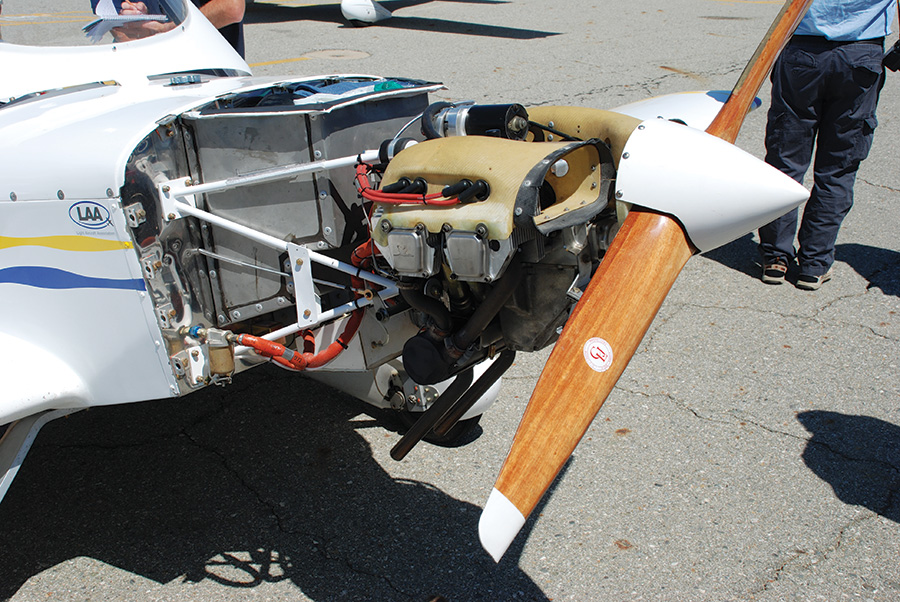
Colin Hales used a Jabiru 2200 for power. This engine is ASTM certified for Light Sport Aircraft and produces 85 hp.
Mark Langford, another attendee, has about as much time in KRs as anyone, with over 1100 hours in make. He created a webinar for the EAA web site featuring a broad overview of the various KR models and their construction. This would be a good stop for anyone thinking about building a KR. You can find it at: http://www.eaavideo.org/video.aspx?v=3668043814001.
Colin Hales flew his KR-2 from England as part of what he calls the KR-2 World Tour. For more information on his odyssey, you can check out his blog at kr2worldtour.blogspot.com. He is living proof that a KR pilot can fly almost anywhere he or she wants to go.
The Planes
KR planes have been around since the 1970s, built from plans, and are currently available in three models. Ken Rand was the original designer, and he was rather small at 5 feet 4 inches tall. He thus designed a plane that was fast, efficient, fun, inexpensive, but not too roomy. The original design was a takeoff of the Taylor monoplane, but has since evolved into its own very distinctive design—or, more accurately, set of designs, with different gear configurations, different sizes, different engines, and different airfoils.
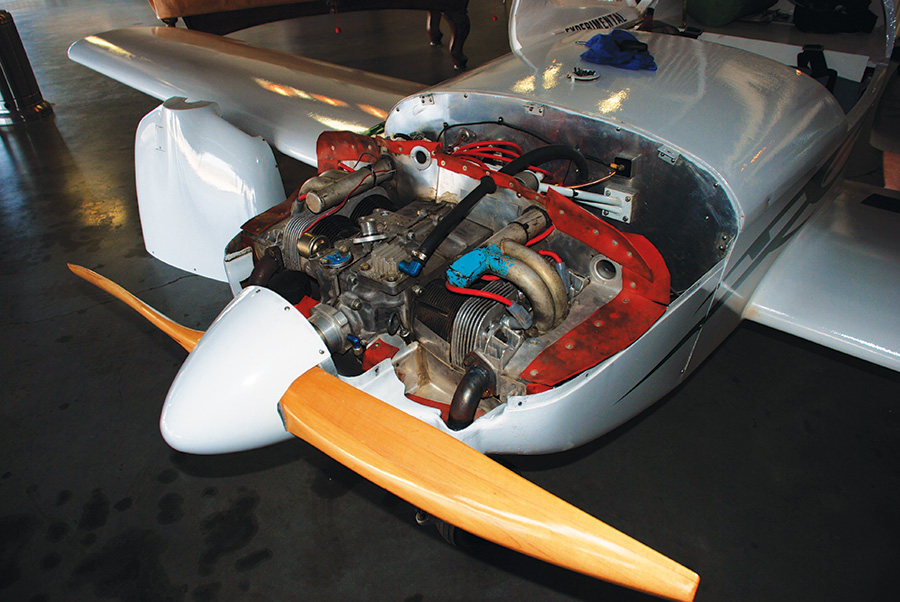
This KR features the traditional (for KRs) VW engine adapted for airplane use. These engines typically produce 80 to 100 hp.
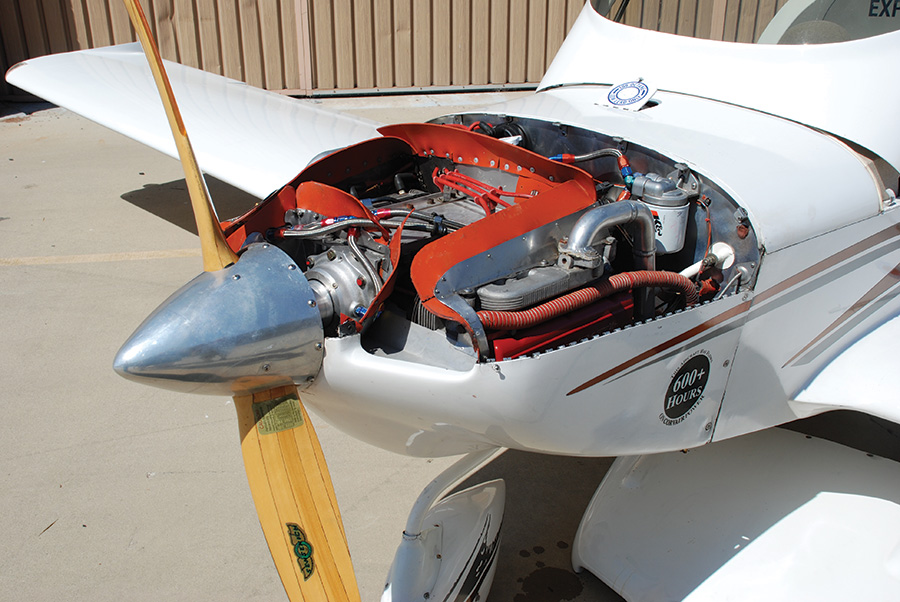
The Corvair engine is also popular with KR builders. After many years of refinement, these engines are proving to be reliable and affordable for builders needing a 100-hp engine.
The KR-1 is a single-seater typically powered by an 1835cc Volkswagen engine. The KR-2 is a somewhat larger two-seat version that usually gets its propulsion from a larger, 2100cc Volkswagen engine or a Corvair engine. The latest version, the KR-2S, is bigger still and can be powered by a number of different engines from a 2180cc Volkswagen, to a Corvair, to a Jabiru, or even an O-200 Continental. As the size of each model increased, builders looked for more powerful engines to maintain climb performance and reach for ever faster cruise speeds. In fact, claims of fantastic cruise speeds, some believable, other less so, dominate KR conversations. Of course, an RV driver or two has been known to stretch the performance of their plane a bit, so we won’t hold that against the KR builders. It’s just hangar flying and all in good fun.
Above is a rundown of the various models. All are fixed gear and can be built as a trike or taildragger. Information is from nVAero.
Many builders report empty weights in excess of those listed above, since they have made their own improvements and additions to increase the comfort and utility of their planes. These planes are not for big people, as is evidenced by their relatively limited useful loads. Two 170-pound people and a reasonable amount of fuel will fit if the builder is careful with the empty weight, but there is no room, let alone useful load, for big guys who push the scale past 200 pounds each or are unusually tall.
The standard KR-2S kit sells for $17,500, or you can just buy a set of plans for $325 and make everything yourself. Grover also offers a number of options and kit components. It is possible to put a KR together for under $20,000, but most people should probably budget about $35,000 or so for a complete airplane.
With a stall speed a little over the Light Sport limit, a number of builders have made slight modifications such as using smaller, lighter engines or other creative modifications to comply with the Light Sport Aircraft rules. In recognition of the obvious opportunity to capture these pilots, Glover has been working on a new KR-2 design to better comply with the rules. No details are available on this new kit at this time, but expect to see something in the near future.
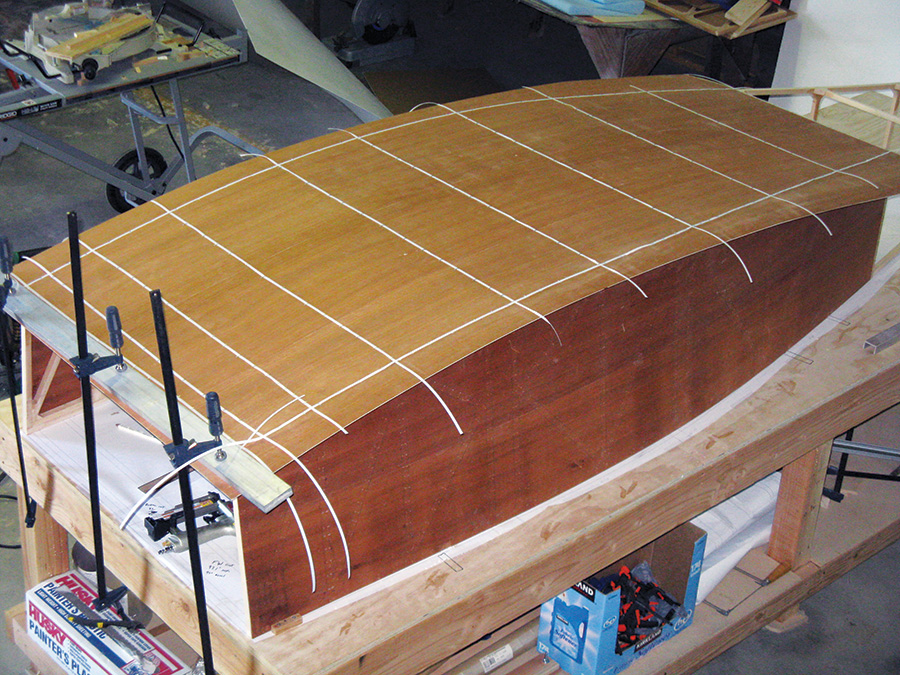
The bottom of the KR fuselage is constructed just like the sides. Here the bottom is being glued to the sides.
Building a KR
The basic KR airframe is pretty simple to construct. The fuselage employs wood longerons with plywood sides and bottom to form the basic structure. The rounded turtledeck is made of shaped foam covered with fiberglass. The cowl is also typically fiberglass. The wings are truly composite with wood spars and ribs mated to fiberglass skins. In the kit version, the skins come preformed to ease construction and better maintain the shape of the airfoil. The kit can usually be built in about 1000 hours, but from plans it takes 400 or so hours longer. Of course, build times vary depending on skill level and the ability to stay focused on the project.
Most builders keep instruments and avionics to a minimum to stay within the recommended empty weight and to keep costs down. These builders are definitely not engaged in a battle to see who can create the most expensive panel. Most every KR owner flies VFR only, and their planes are outfitted accordingly. As a group they are cost-conscious and creative in getting the most performance for the least amount of money out of their projects.
The wide variety of engines employed by KR builders can bring some interesting challenges when it comes time to get the airplane’s mass within the prescribed weight and center of gravity envelope. Builders must use ingenuity and more than a bit of custom craftsmanship to make everything work out, but this is a crew that rises to such challenges. If you want a kit that simply requires assembly, along the lines of an RV-12, the KR may not be your best choice. On the other hand, if you enjoy the company of innovators and tinkerers, you may well find a happy home among your fellow KR builders.
Flying the KR
Your author, due to his extra-large size, cannot give you a firsthand account of the KR’s flying qualities, but a survey of the assembled builders and various comments on the krnet.org forum paint a good picture of what it’s like to fly a KR. Keep in mind that every KR is a little different from every other KR, so general comments about flying characteristics are just that—general.
Builder Adrian Carter talks about the KR’s stall characteristics: “It [the stall] can be quite sudden. You will feel a buffet, and then next you’re looking straight at the ground. Neutralize the stick and pressure back gently—you don’t want to take the wings off. Remember, this is nothing like you have flown before. Each aircraft has its own characteristics. Stall speeds vary, and it just handles slightly differently.”
Another builder, Jim Faughn, talks about landing the KR: “The KR is so close to the ground that you will encounter ground effect in a very big way. You can and should use this to your advantage in making the perfect landing. Patience is a huge virtue during this phase. I will never land my airplane above 60 mph. If I try, and for the first 60 hours I tried all the way up to 80 mph, I will bounce.”
Other builders describe the KR as very light on the controls, slippery, prone to floating on landing, and possessed of a rather abrupt stall. It is very sensitive to center-of-gravity loading due to the very short distance between the wings and the tail surfaces. This makes different engine installations more of an engineering challenge than it is with other, more forgiving designs. This challenge is nonetheless met by builders all the time as the wide assortment of engines powering KR airplanes will attest.
Is the KR for you? If you are a real experimenter who loves the company of other real experimenters, you may find a happy home with other KR builders. If you want to build something that is conventional and conventionally powered, something that will hold some baggage and maybe even fly a little IFR, you probably need to look elsewhere. That is not what KRs are about. If you are a big guy like your author, the KR is probably not a good choice. However, one 6-foot-4-inch KR builder simply added 24 inches to the length of his fuselage and found a way to fit himself in, which is the true KR spirit—make it your way.
For more information see these web sites: www.nvaero.com, http://fly-kr.com, and www.krnet.org.

